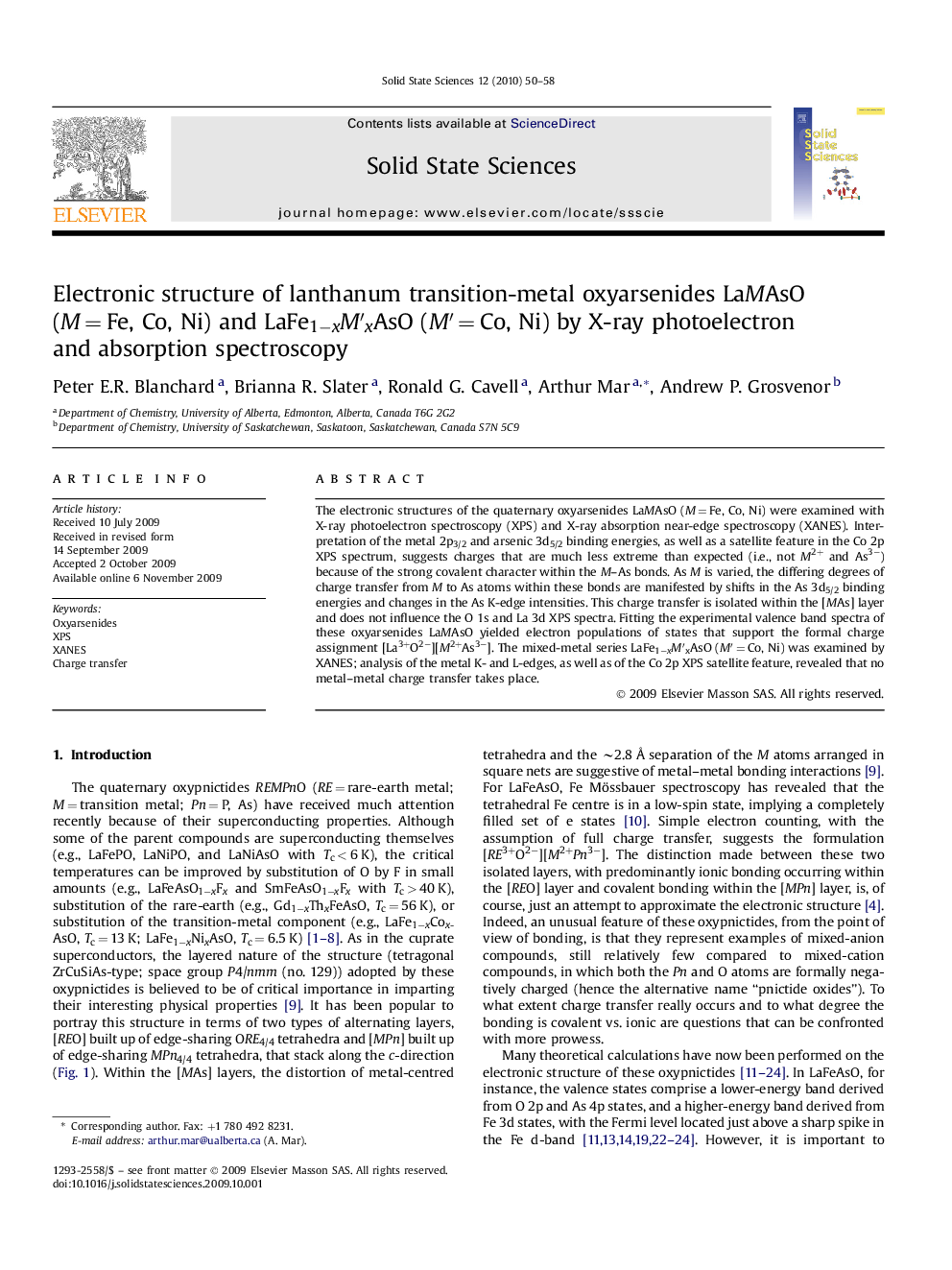| کد مقاله | کد نشریه | سال انتشار | مقاله انگلیسی | نسخه تمام متن |
|---|---|---|---|---|
| 1505725 | 993771 | 2010 | 9 صفحه PDF | دانلود رایگان |

The electronic structures of the quaternary oxyarsenides LaMAsO (M = Fe, Co, Ni) were examined with X-ray photoelectron spectroscopy (XPS) and X-ray absorption near-edge spectroscopy (XANES). Interpretation of the metal 2p3/2 and arsenic 3d5/2 binding energies, as well as a satellite feature in the Co 2p XPS spectrum, suggests charges that are much less extreme than expected (i.e., not M2+ and As3−) because of the strong covalent character within the M–As bonds. As M is varied, the differing degrees of charge transfer from M to As atoms within these bonds are manifested by shifts in the As 3d5/2 binding energies and changes in the As K-edge intensities. This charge transfer is isolated within the [MAs] layer and does not influence the O 1s and La 3d XPS spectra. Fitting the experimental valence band spectra of these oxyarsenides LaMAsO yielded electron populations of states that support the formal charge assignment [La3+O2−][M2+As3−]. The mixed-metal series LaFe1−xM′xAsO (M′ = Co, Ni) was examined by XANES; analysis of the metal K- and L-edges, as well as of the Co 2p XPS satellite feature, revealed that no metal–metal charge transfer takes place.
XPS valence band spectrum for LaNiAsO fitted to component peaks.Figure optionsDownload as PowerPoint slide
Journal: Solid State Sciences - Volume 12, Issue 1, January 2010, Pages 50–58